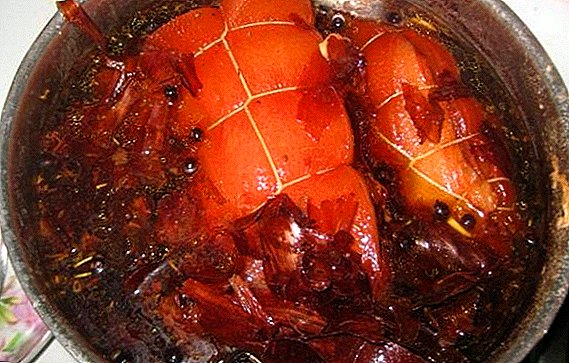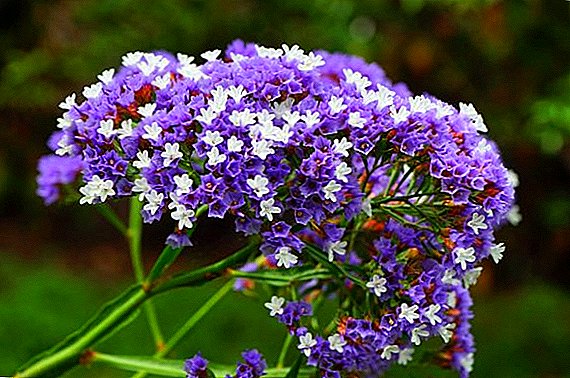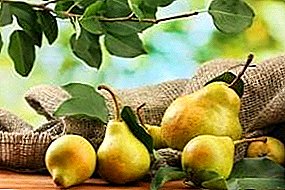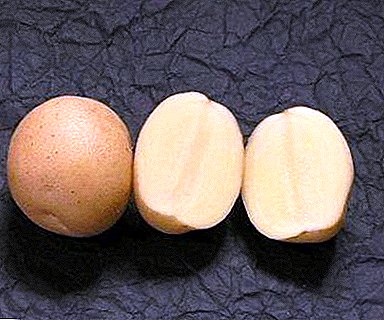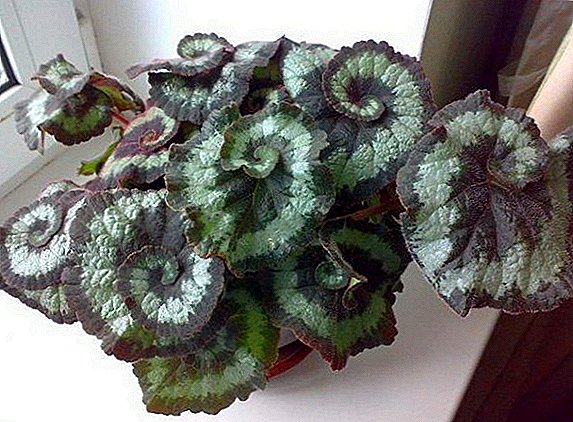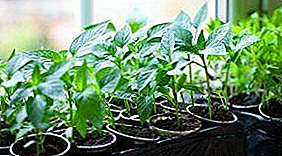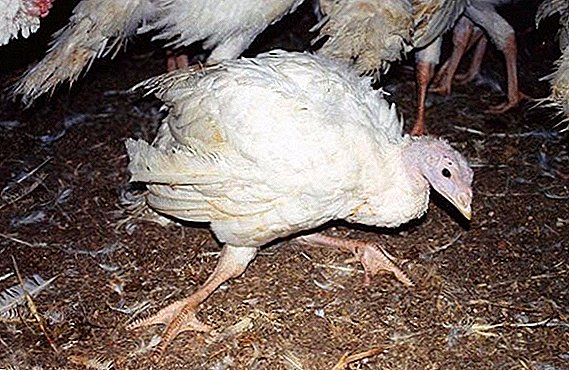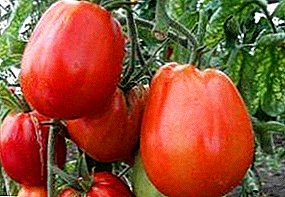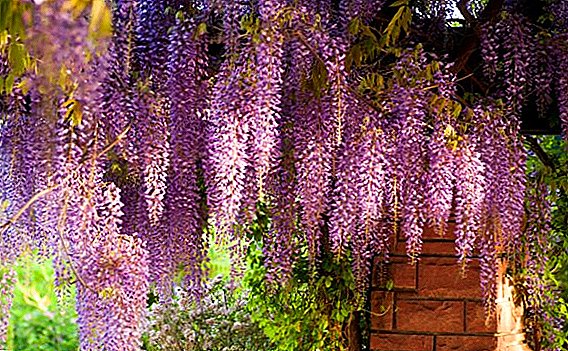 WisteriaPerhaps the most fascinating plant on earth. Who had the pleasure at least once in life to contemplate its flowering and feel its unique aroma, will keep in mind this wonderful moment for a lifetime. The incredibly long raceme-shaped inflorescences of wisteria can reach up to half a meter, they cover the plant in magical clusters, and at one glance at them it seems that it has fallen into a fairy tale.
WisteriaPerhaps the most fascinating plant on earth. Who had the pleasure at least once in life to contemplate its flowering and feel its unique aroma, will keep in mind this wonderful moment for a lifetime. The incredibly long raceme-shaped inflorescences of wisteria can reach up to half a meter, they cover the plant in magical clusters, and at one glance at them it seems that it has fallen into a fairy tale.
Wisteria: Plant Description
Wisteria - luxurious decorative perennial liana, which has amazing openwork leaves and divine blue, lilac or whitish inflorescences. It is a luxurious flowering that made wisteria incredibly popular in our country.
Wisteria, or wisteria, is a prominent representative of deciduous climbing tree subtropical vines belonging to the legume family. Most of the plants of this species grow exclusively in warm tropical climates. 
Domestic gardeners successfully cultivate in their plots wisteria blooming and Chinese wisteria.
Did you know? When creating the most comfortable conditions, the wisteria in length can reach up to 10 meters.
Chinese Wisteria is more fragrant, but less frost-resistant, while its abundantly blossoming relative can withstand a brief temperature drop to -23 degrees.
What you need to consider when planting vines
Wisteria is very sensitive to air pollution, and therefore the plant can grow well only in areas characterized by favorable environmental conditions. The plant blooms only five years after planting seeds, cuttings or cuttings. Fertile loose and well-drained soil is suitable for planting wisteria, in which moisture will not stagnate.
 Planting plants produced in the prepared pits of size 60/60/50. Caring for a plant does not take you much time and effort. In order for the wisteria to grow well and develop normally, you will need to ensure high-quality watering and sparse fertilizing. Planting wisteria in the fall will be more successful if you live in southern areas that are characterized by a mild climate and no sharp temperature fluctuations.
Planting plants produced in the prepared pits of size 60/60/50. Caring for a plant does not take you much time and effort. In order for the wisteria to grow well and develop normally, you will need to ensure high-quality watering and sparse fertilizing. Planting wisteria in the fall will be more successful if you live in southern areas that are characterized by a mild climate and no sharp temperature fluctuations.
Important! In order for the plant to enjoy a generous flowering, it is recommended to shorten its shoots. Ideally, the length of the wisteria branches should not exceed 30 centimeters.
If the plant is cultivated in the northern regions, then in order for it to winter without damage, it is recommended to carefully cover the bushes. Due to the fact that the shoots of wisteria are very heavy, you need to worry about installing props even before the start of flowering.
Important! Wisteria is fast growing, and therefore it is sometimes necessary to trim the bushes several times per season.
Lighting Requirements
Liana is characterized by a pathological love of light, and therefore reacts poorly to a lack of ultraviolet radiation. The light-loving glycine wisteria, which is grown under low light, is unlikely to be able to please you with a generous flowering, bright saturated colors and an active pace of development. 
Plants that chronically lack sunlight, look weak and painful, sometimes a lack of light becomes the main reason that the culture refuses to bloom.
What should be the humidity and temperature for successful growth
Liana is quite thermophilic, and therefore feels great in areas characterized by hot summer. Despite the favorable attitude towards heat, the wisteria still does not tolerate temperatures well above 35 degrees. In order for the plant to endure good wintering, its shoots need careful wrapping, especially in the frost protection of the tree trunk.
If your pet belongs to indoor crops, then in winter it should be cultivated indoors at a temperature of about +10 degrees. Cultivating wisteria in Spartan conditions will prevent its premature flowering.
Important!When grown indoors, the plant does not need additional spraying. However, when cultivating wisteria in a room in which there are radiators, as a result of which the air is overdried, spraying the bushes can be used to humidify the environment, or water tanks can be installed next to the plant.
How to plant wisteria
 When planting wisteria, special attention should be paid to the choice of location: it must be well protected from drafts and be sunny. It is preferable to plant the glyciniis seedlings on the south side, and it is important to think in advance about the location of the supports.
When planting wisteria, special attention should be paid to the choice of location: it must be well protected from drafts and be sunny. It is preferable to plant the glyciniis seedlings on the south side, and it is important to think in advance about the location of the supports.
Important! Liana is not very scrupulous about the soil, but the plant will feel more comfortable on nutritious, well-hydrated and lime-free soils.Planting is carried out in the prepared hole, which was previously added compost. After planting, he needs to ensure the highest quality watering.
Did you know?Do not be afraid if the vine will stop growing at first. But after the period of adaptation has passed, it will surprise you with an active pace of development.
Planting layering
 Wisteria reproduction by layering is also very popular among gardeners. As cuttings can be used last year's shoots. In early spring, shoots are laid out neatly on the surface of the plot and covered with earth.
Wisteria reproduction by layering is also very popular among gardeners. As cuttings can be used last year's shoots. In early spring, shoots are laid out neatly on the surface of the plot and covered with earth.
Important! From the mother plant rooted shoots can be separated not earlier than in a year.
How to grow wisteria from seed
Planting seeds of glycine is carried out in November or early December. Seeds are sown on the surface of a soil substrate consisting of sheet, woody soil and sand at a ratio of 4 x 1 x 1. After sowing, it is recommended to cover the seeds with a layer of sand that is no more than 1-2 millimeters thick.
Then sprayed with a spray of water and cover the container with glass or a piece of polyethylene to create the optimal microclimate. Put the container in a warm place, the temperature in which can vary from 22 to 25 degrees.
Important! Until the seeds germinate, it is necessary to ensure that the soil in the container does not dry out and is constantly in a slightly moist state..
 Shoots will appear after 3-4 weeks, and after another 7-10 days the container with shoots can be moved to a more lighted, but protected from direct sunlight place.
Shoots will appear after 3-4 weeks, and after another 7-10 days the container with shoots can be moved to a more lighted, but protected from direct sunlight place.
After the emergence of the shoots of two leaves, they are dived and transplanted together with an earthen lump into a separate container, and then watered with a weak solution of potassium permanganate.
Rules for the care of ornamental plants
Even a novice will cope with the care of a beautiful woman. The luxurious liana wisteria, planting and caring for which does not require you to have special knowledge, is distinguished by a non-capricious disposition. The plant will appreciate the generous flowering only when cultivated in well-lit areas and protected from wind gusts.
When growing wisteria, you must constantly tie up its regrown shoots. In order for the plant to enjoy active flowering, its shoots need constant pruning.
Important! When cultivating vines will need to ensure that its roots are not dry, and otherwise it will form a small number of flower buds, which will lead to a decrease in the number of inflorescences.
Watering features
 Wisteria loves moisture, but reacts poorly to excessive watering. In order to determine that it is time to water the bush, try to squeeze the soil in your fist, if the soil easily assumes the given shape, and when pressed lightly breaks up, the time for watering has not come yet. If you fail to form a clump of soil, the plant needs watering.
Wisteria loves moisture, but reacts poorly to excessive watering. In order to determine that it is time to water the bush, try to squeeze the soil in your fist, if the soil easily assumes the given shape, and when pressed lightly breaks up, the time for watering has not come yet. If you fail to form a clump of soil, the plant needs watering.
Important! Remember, the lack of moisture will cause wisteria to start dropping flowers.
When grown indoors or in areas characterized by warm winters, watering of the vines stops in December and begins to prepare it for wintering.
How and when to feed wisteria
 Wisteria - it is a rather large liana, and in order for the plant to have a rich color throughout the entire growing period, it needs periodic introduction of a feed. When feeding the wisteria with complex mineral fertilizers, they are introduced as follows: 10 liters of water with 20 grams of fertilizers diluted in it are used per 1 m² of land.
Wisteria - it is a rather large liana, and in order for the plant to have a rich color throughout the entire growing period, it needs periodic introduction of a feed. When feeding the wisteria with complex mineral fertilizers, they are introduced as follows: 10 liters of water with 20 grams of fertilizers diluted in it are used per 1 m² of land.
Also, the liana will perfectly respond to the introduction of tincture of rotted manure prepared at the rate of 1 x 20 or chalk solution (100 grams of dry chalk powder dissolves in one bucket of water).
Pruning vines
Many gardeners do not know how to properly cut wisteria. But it depends on the correctness of pruning how generously the vine will bloom. Pruning wisteria is carried out on average twice a year.
After planting, it is necessary to trim the main shoot of the culture to a strong bud. Also, all lateral shoots are cut off, which activates the development of the main stem.
In the first year, in the summer of garter bushes, it is necessary to ensure that its main shoot is located vertically, and the other two - at an angle of about 45 degrees.
In the second year in winter, the main stem will need to be shortened so that its length does not exceed 80 centimeters. After that we form two more horizontal shoots and shorten them by a third.
Next summer, we tie the main stem of the vine to a support, select two more shoots and tie them at an angle equal to 45 degrees. In the event that additional shoots begin to form at the base of the plant, they must be removed.
At the next stage, we tie up the newly formed stem and shorten all branches of the second order to 20 centimeters on it.
Important! In the third year, as well as in the following years, it will be necessary to carry out all the above-mentioned actions aimed at the vertical development of the plant.
Wisteria reproduction
The easiest way to breed Wisteria - the division of the bush. This method is only suitable for young plants, which are from 3 to 5 years old. Old bushes just break in on one side and separate a small part of the plant for transplanting.
 Growers claim that planting wisteria in the spring will be more successful, because over the summer the plant will have time to take root and grow stronger.
Growers claim that planting wisteria in the spring will be more successful, because over the summer the plant will have time to take root and grow stronger.
Gardeners often propagate wisteria cuttings. When carrying out this manipulation, the shrub of an adult plant is undermined, while cutting all available roots by a third.
All large roots are cut off directly at the root collar, after which wisteria is added dropwise and a new nutritious soil is necessarily added to the pit.
Did you know? Such actions will cause the plant shock, which activates root formation. New roots of lianes are distinguished by a high ability to actively form new buds, of which young shoots will develop in the future.The following year, the bush must again be undermined and cut young roots at the root collar, which will then be used for grafting.
It is necessary to choose only those roots that are not thinner than a pencil and have a length of 10 to 15 centimeters. At the next stage, the selected roots are treated with fungicides and planted in nutrient friable soil.
During this period, the cuttings need moderate watering. In the fall, they are transplanted to a permanent place or to a greenhouse for growing.
Diseases and pests of wisteria
Did you know? Due to the toxic properties of wisteria is not susceptible to infection by pests and diseases.But still sometimes the vine is attacked by a green aphid, for the destruction of which they use a soap-ash solution or the insecticidal drug "Tanrek".
 Another pest, which is not afraid of the poisonous properties of wisteria, is a clover mite. To protect the plant in this case, it is recommended to use the drug "Karate Zeon".
Another pest, which is not afraid of the poisonous properties of wisteria, is a clover mite. To protect the plant in this case, it is recommended to use the drug "Karate Zeon".
Preparing the plant for winter
After autumn pruning to protect the bushes from frost, shoots bend to the ground. After removing the support, we place the shoots on a layer of foam or lapnik and cover the branches with dry oak leaves.
Important! Oak foliage is used to cover the creeper, because it does not rot, and this suggests that the temperature below it will remain stable.Oak leaves from above are covered with a layer of lapnik or any covering material. Bend the branches of the vine should be gradually, preferably to choose for this warm days. It is better to perform the procedure after lunch, because at this time its stems are more plastic.
Visceria - a beautiful plant, and if you are going to cultivate this vine on your own plot, you need to know exactly how to care for the wisteria in the garden. The plant is unpretentious, and if you surround it with minimal care and attention, it will surely please you with generous flowering.



